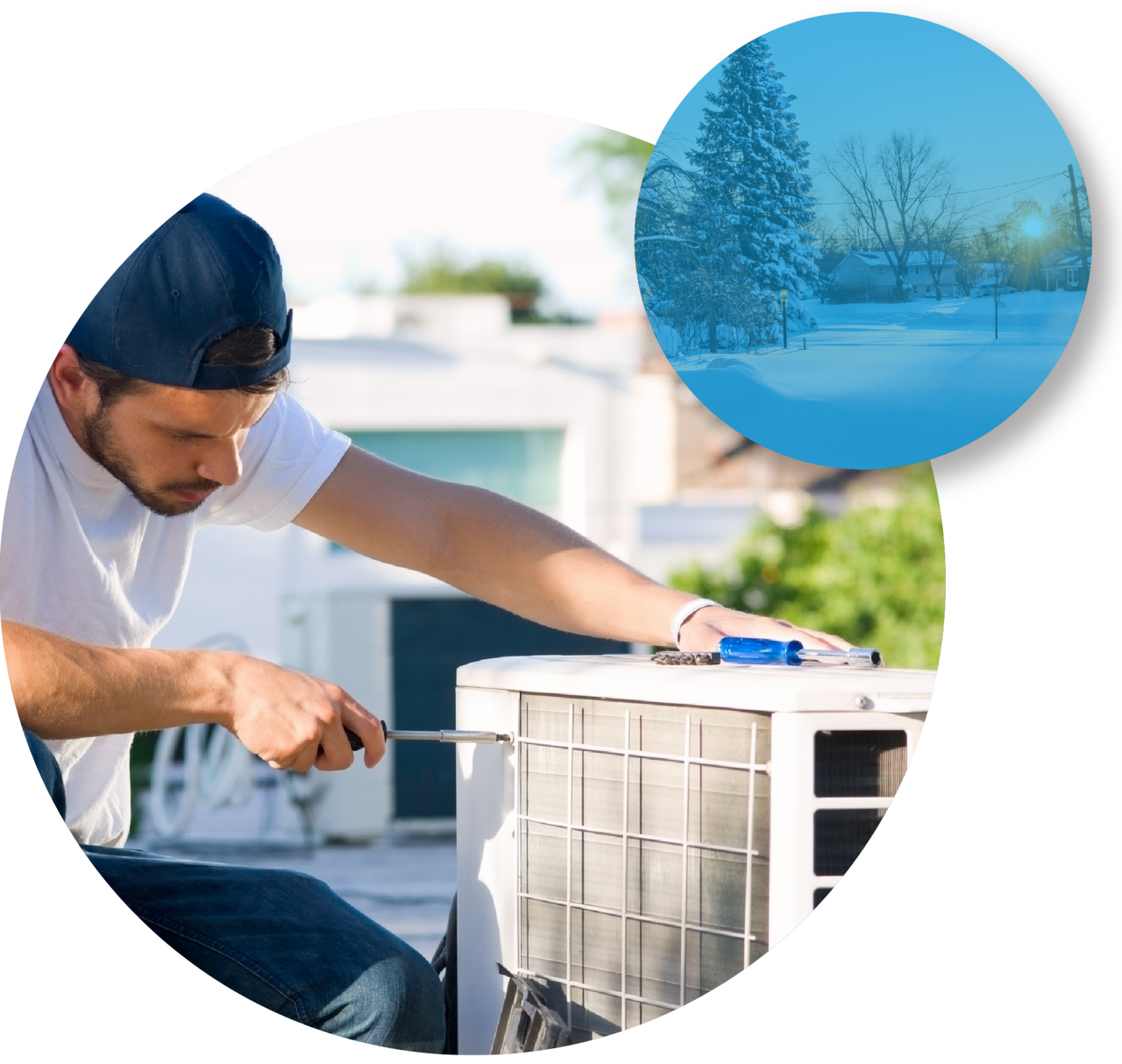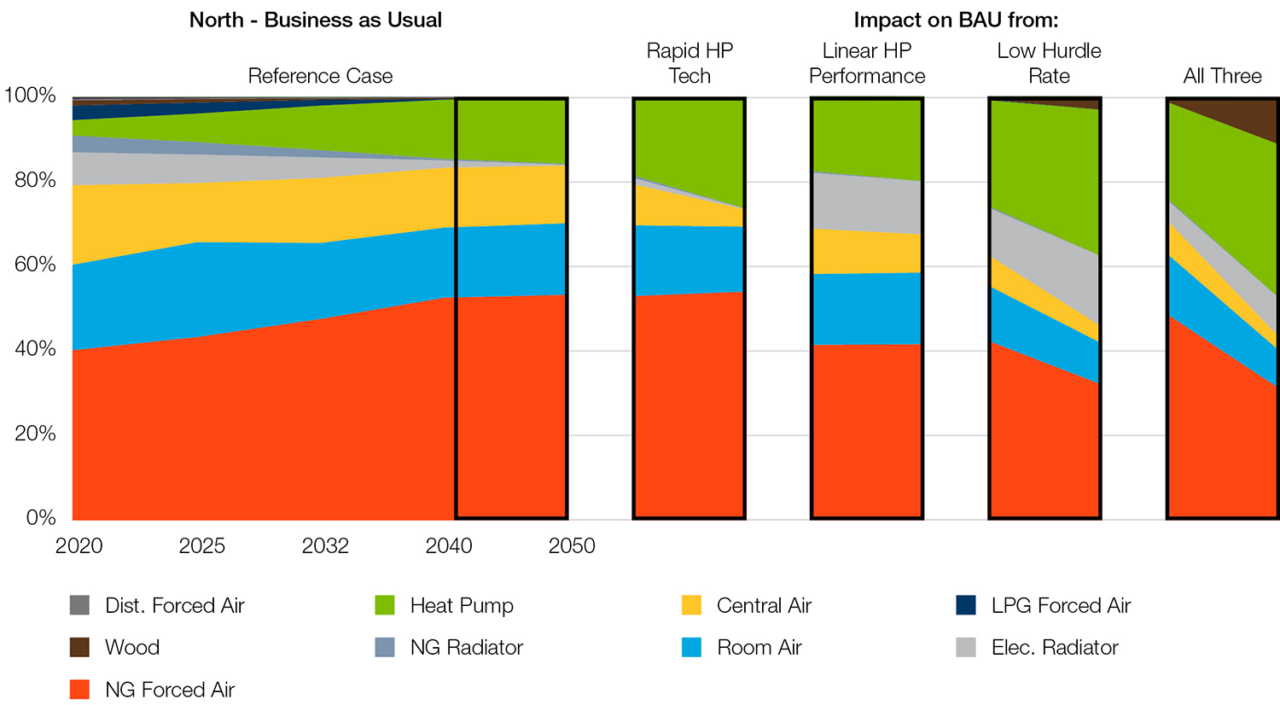From 10° below to 95°

Because heat pumps extract heat from the outside air and bring that heat indoors, heat pumps are less efficient the colder it gets outside. In the northern part of the region, heat pumps generally require backup heating to supply heat on the coldest days. To bolster heat pump adoption in the north, the road map analysis suggests that advances in heat pump technology and policies to reduce the barriers to heat pump adoption are needed. Additionally, alternatives such as renewable natural gas and hydrogen may play key roles in achieving decarbonization goals if they are found to be cost-effective for customers.
Heat Pumps in Northern Region
The figure below depicts projected heat pump penetration as a share of heating devices across various scenarios in the northern part of the Midcontinent region. On the left in the figure below business-as-usual projections suggest some uptake in air-source heat pumps even with modest technology improvements. The analysis suggests that heat pumps are already cost-effective for applications that replace existing propane or home heating oil furnaces.
Heat Pump Devices as a Share of Devices Across Scenarios in the North Region

On the right side of figure, heat pump penetration between 2040 and 2050 is depicted relative to other heating devices when rapid improvements in heat pump technology is assumed, or linear heat pump performance is assumed, or it is assumed that barriers to adoption look more like a 7.5 percent cost adder than a 20 percent cost adder. Lastly, we see heat pump penetration is greatest when all three factors are assumed to speed heat pump adoption. In the northern region, we see wood becomes a backup fuel in more heat pump situations, presumably to cover the coldest days when the heat pump is less effective.


